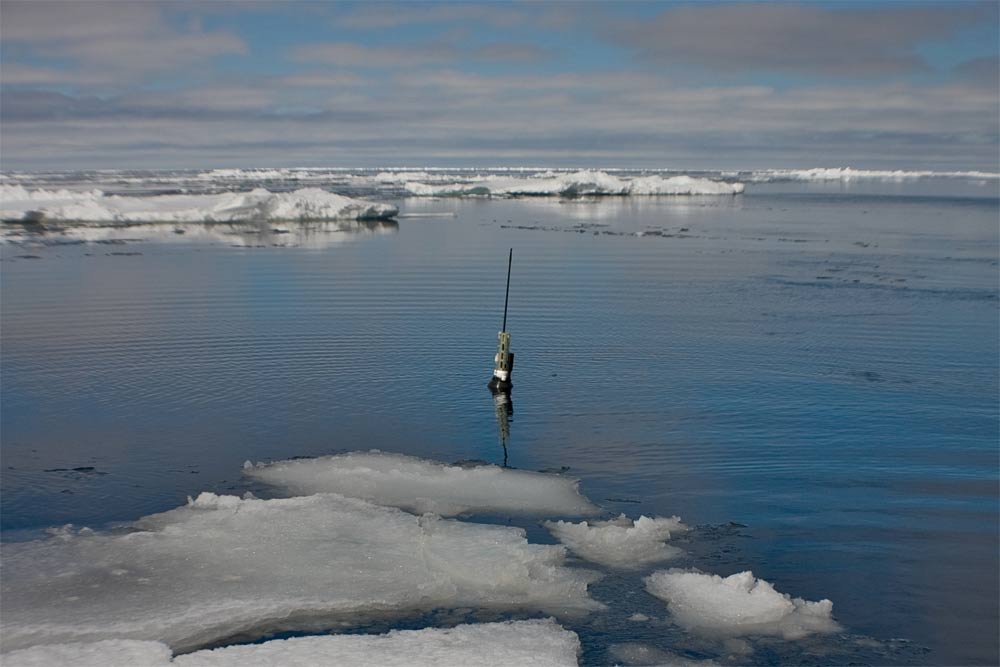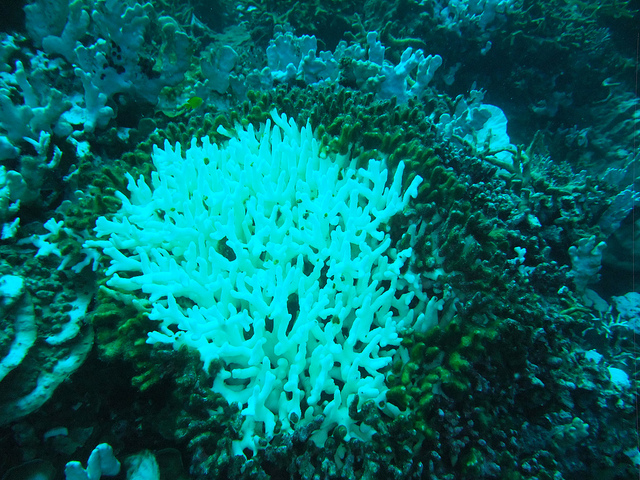Report on Climate-Driven Fish Migration and its Implications for Sustainable Development Goals
Introduction: Climate Change and Marine Ecosystems
This report examines the southward migration of tropical fish in Australia, a direct consequence of oceanic warming driven by climate change. This phenomenon has significant implications for the United Nations Sustainable Development Goals, particularly SDG 13 (Climate Action) and SDG 14 (Life Below Water). The analysis focuses on the behavioral adaptations of migrant species and the resulting ecological shifts within temperate marine environments.
The Phenomenon of Climate-Induced Species Migration
Drivers of Poleward Migration (SDG 13)
Rising ocean temperatures, a key indicator of climate change, are compelling species to move to cooler waters. The process in Eastern Australia is characterized by several factors:
- The strengthening East Australian Current facilitates the transport of tropical fish larvae southwards into temperate zones.
- Warmer winter temperatures, a departure from historical norms, now allow some tropical species to survive year-round in these new temperate reefs.
- This establishes permanent populations far beyond their traditional home ranges, a clear indicator of the impacts targeted by SDG 13.
Ecological Disruption and Threats to Biodiversity (SDG 14)
Migrant tropical fish encounter novel environmental stressors in temperate reefs, creating challenges that threaten the stability of these ecosystems and the objectives of SDG 14. These challenges include:
- Colder water temperatures than their native habitats.
- Unfamiliar predators and predation pressures.
- Competition with established temperate species for food and shelter.
Research Findings on Behavioral Adaptation
A study conducted along a 2,000km stretch of Australia’s east coast observed the behavior of five tropical and two temperate fish species to understand their adaptive mechanisms.
Initial Risk-Averse Behaviors
In colder, unfamiliar waters, tropical fish exhibited significant behavioral changes as a primary survival strategy:
- Increased time spent in hiding and seeking shelter.
- Reduced time allocated to feeding and foraging.
- Heightened wariness of predators, indicated by a cognitive shift in “lateralisation” for faster escape responses.
While these behaviors enhance immediate survival, they compromise long-term growth and fitness, highlighting the stresses placed on marine life, a core concern of SDG 14.
The Adaptive Advantage of Interspecies Shoaling
The study revealed that social interaction with local temperate species is a critical factor in the success of some tropical migrants. When forming mixed-species shoals, tropical damselfish demonstrated:
- Increased time spent feeding.
- Reduced time spent sheltering.
- Bolder behavior and greater success in finding food.
This suggests that behavioral plasticity, specifically social learning from resident species, is a powerful tool for adapting to climate-induced environmental change, supporting the goal of enhancing the resilience of marine ecosystems under SDG 14.
Broader Implications for Marine Ecosystems and SDG 14
The interactions between migrant and resident species have complex and varied outcomes, impacting the overall health and stability of the ecosystem and progress towards SDG 14.
Varied Success Among Migrant Species
The benefits of shoaling were not universal across all migrating species, indicating the complexity of predicting ecosystem-wide responses to climate change.
- Three species of tropical damselfish successfully adapted their behavior through interaction with temperate fish, improving their survival prospects.
- Two species of herbivorous tropical tangs did not show the same benefits, likely due to specialized dietary needs that hindered social learning from omnivorous temperate species.
Negative Consequences for Resident Temperate Species
The arrival of tropical competitors poses a significant threat to native temperate fish, which are already under stress from warming waters. The study observed that temperate fish in mixed shoals fled more often and fed less. This increased competition directly threatens local biodiversity and undermines the objectives of SDG 14: Life Below Water, which aims to conserve and sustainably use marine resources.
Conclusion: Managing Marine Ecosystems in a Changing Climate
A New Ecological Reality
The poleward migration of species is a clear manifestation of the impacts described in SDG 13 (Climate Action), fundamentally reshaping marine communities. The success of migrant species is not solely determined by temperature tolerance but is heavily influenced by behavioral adaptability and interspecies relationships.
Path Forward for Sustainable Marine Management
To effectively manage marine environments and achieve the targets of SDG 14, conservation efforts must account for these complex behavioral dynamics. Understanding how new species interactions shape ecosystem resilience is critical for predicting and mitigating the impacts of climate change on life below water and developing strategies that support the long-term health of our oceans.
SDGs Addressed in the Article
-
SDG 13: Climate Action
The article directly addresses the impacts of climate change, specifically citing rising ocean temperatures and the strengthening of ocean currents as the primary drivers for the migration of tropical fish. It discusses the consequences of these climatic shifts on marine life, which aligns with the goal of taking urgent action to combat climate change and its impacts.
-
SDG 14: Life Below Water
The core theme of the article is the conservation and sustainable use of oceans and marine resources. It examines how climate change affects marine biodiversity, the health of coastal ecosystems (temperate reefs), and the interactions between different fish species. The research aims to understand these changes to better manage marine environments, which is central to SDG 14.
Specific SDG Targets Identified
-
SDG 13: Climate Action
-
Target 13.1: Strengthen resilience and adaptive capacity to climate-related hazards and natural disasters in all countries.
The article highlights the consequences of climate-related hazards like “marine heatwaves” and increased “winter water temperatures.” The study of how tropical fish adapt to these new conditions through “behavioural ‘plasticity'” and social learning is a direct examination of adaptive capacity within an ecosystem.
-
-
SDG 14: Life Below Water
-
Target 14.2: By 2020, sustainably manage and protect marine and coastal ecosystems to avoid significant adverse impacts, including by strengthening their resilience, and take action for their restoration in order to achieve healthy and productive oceans.
The article describes a significant adverse impact on temperate reef ecosystems due to the “slow-motion invasion” of tropical fish. It notes that while some migrant fish thrive, their presence can be “problematic” for local temperate species, potentially pushing them “over the edge.” The concluding statement, “Understanding how fish respond… will be key to managing reefs in a rapidly warming ocean,” directly points to the need for management and protection of these ecosystems.
-
Target 14.a: Increase scientific knowledge, develop research capacity and transfer marine technology… in order to improve ocean health.
The entire article is based on “new research” that aims to increase scientific knowledge about the effects of climate change on marine life. The methodology is detailed, involving studying “five tropical fish species and two temperate species across a 2,000km stretch” and using “underwater video cameras” to observe behavior. This research directly contributes to understanding and improving ocean health.
-
Indicators for Measuring Progress
-
For Target 13.1 (Strengthen resilience and adaptive capacity):
- Change in ocean temperature: The article explicitly mentions that “winter water temperatures increase” and that 2023 set “new records for the duration, extent and intensity of marine heatwaves.”
- Species migration patterns: The movement of tropical fish is a direct indicator of climate impact. The article notes they are showing up “hundreds of kilometres beyond their usual home range.”
- Species survival rates in new environments: The fact that “some tropical fish survive year-round in temperate reefs” is an indicator of their adaptive capacity.
-
For Target 14.2 (Manage and protect marine ecosystems):
- Changes in species behavior: The research measured behavioral shifts as an indicator of ecosystem stress and adaptation. For example, in colder waters, tropical fish “spent more time hiding and less time feeding,” while temperate fish “fled more often and fed less when tropical fish were present.”
- Health and behavior of native species: The negative impact on temperate fish, which are “already pushing… their biological limits,” serves as an indicator of ecosystem disruption.
- Formation of new species interactions: The observation of “mixed-species shoaling” between tropical and temperate fish is a key indicator of a changing reef community structure.
-
For Target 14.a (Increase scientific knowledge):
- Publication of scientific research: The article itself, reporting on a study published in a scientific journal (“new research we studied”), is an indicator of an increase in scientific knowledge.
- Scope of scientific studies: The scale of the research—covering a “2,000km stretch of Australia’s east coast” and analyzing multiple species—indicates a comprehensive effort to build knowledge.
Summary Table of SDGs, Targets, and Indicators
| SDGs | Targets | Indicators |
|---|---|---|
| SDG 13: Climate Action | 13.1: Strengthen resilience and adaptive capacity to climate-related hazards. |
|
| SDG 14: Life Below Water | 14.2: Sustainably manage and protect marine and coastal ecosystems to avoid significant adverse impacts. |
|
| 14.a: Increase scientific knowledge and research capacity to improve ocean health. |
|
Source: theconversation.com







